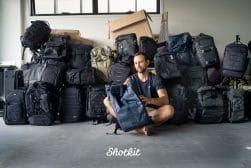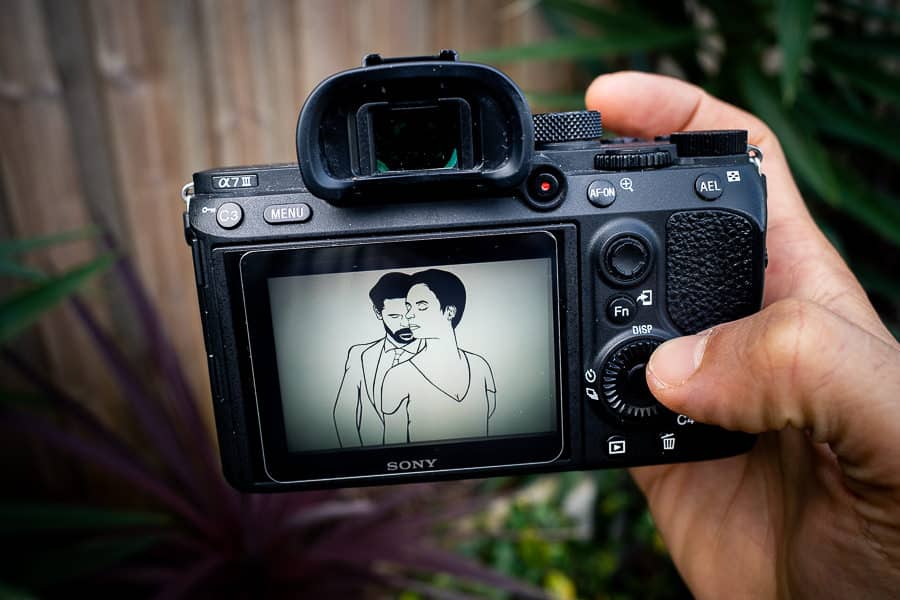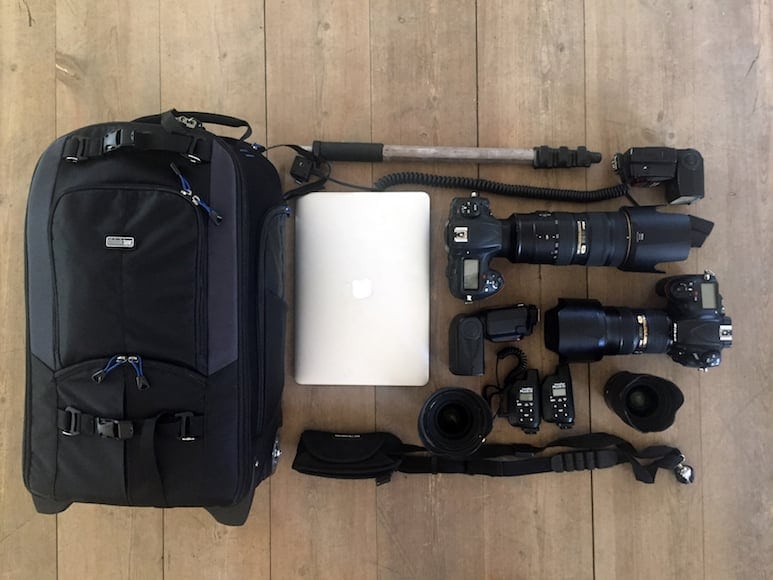
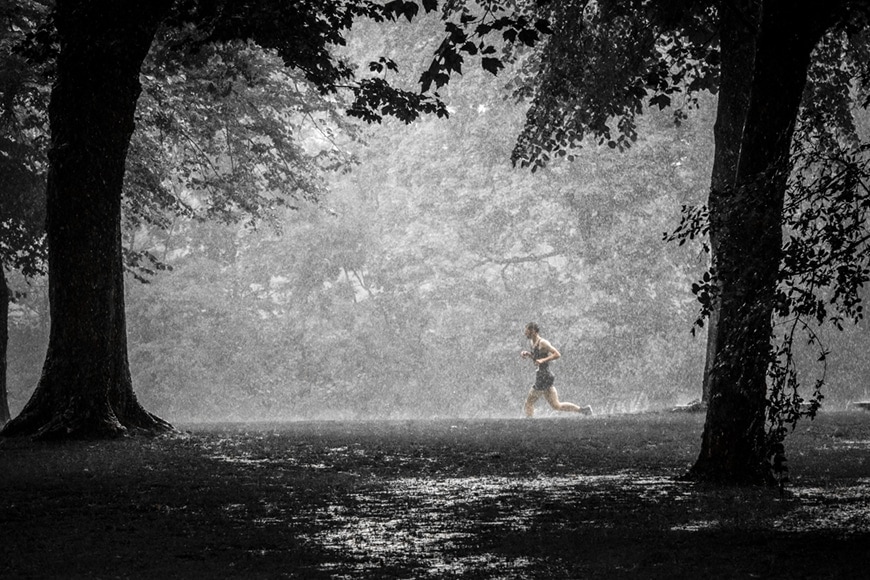
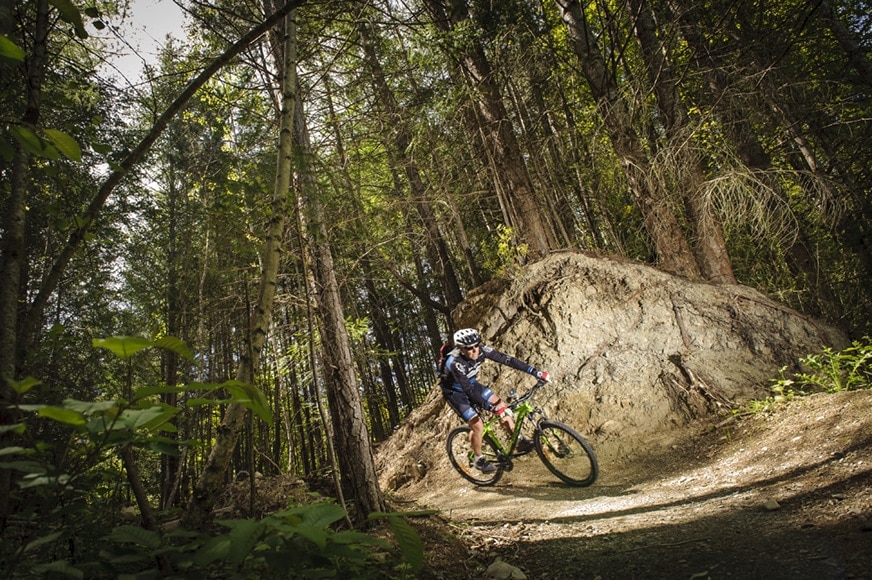
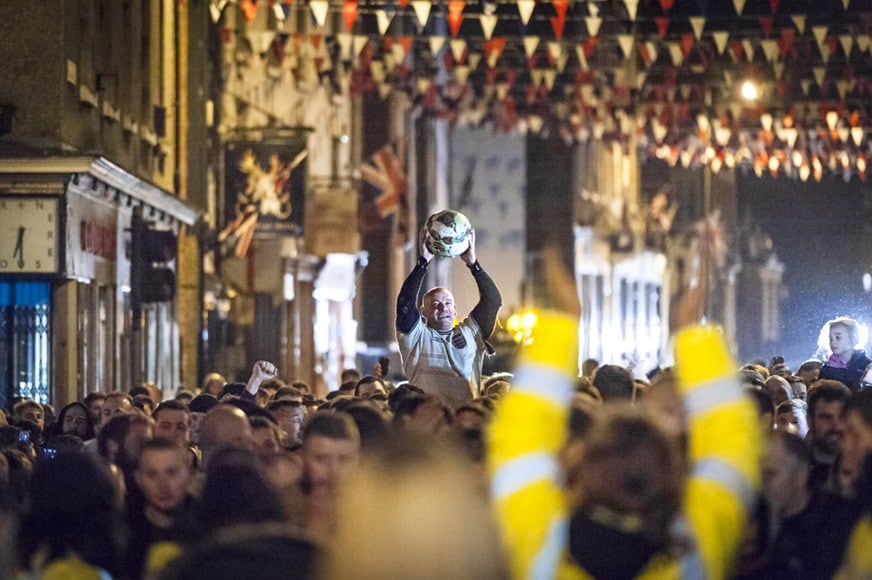
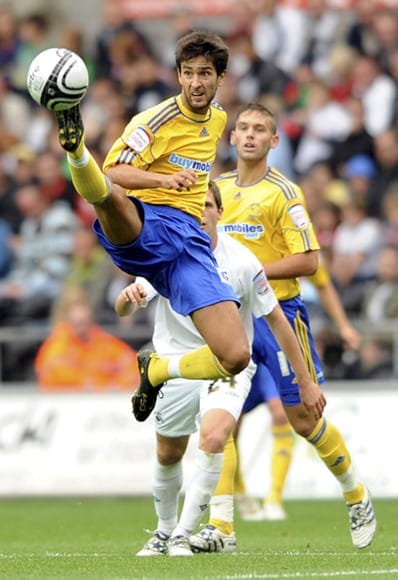
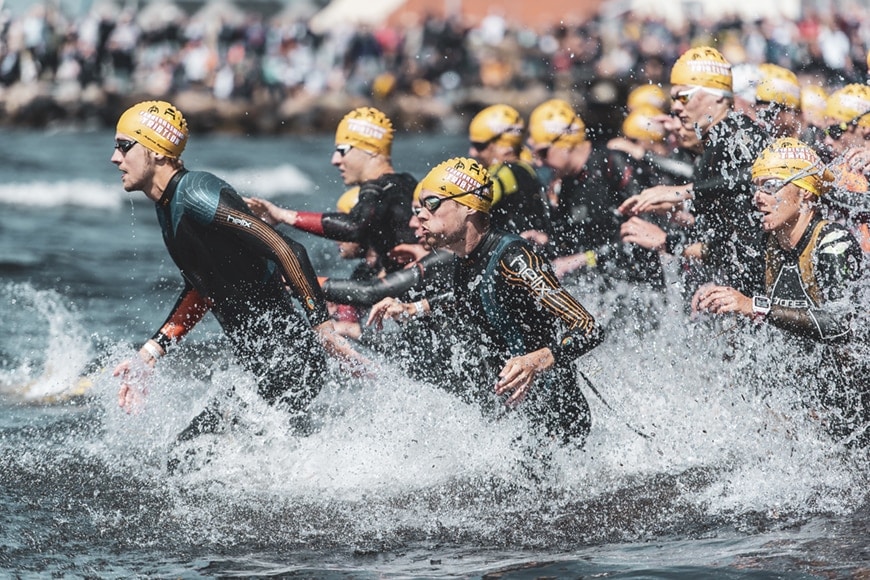
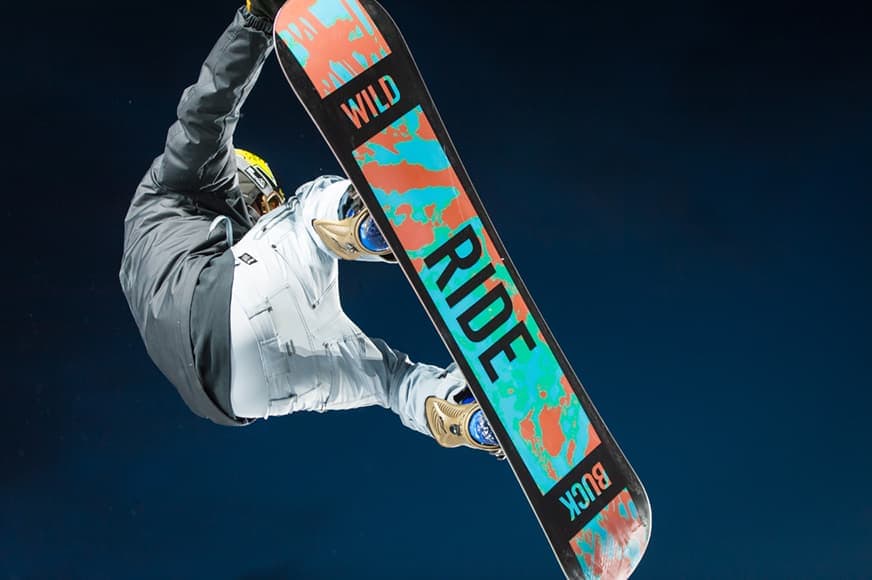
Matthew James
Sports | Last Updated: February 11, 2021
My name is Matthew James Harrison, and I’m a freelance photojournalist based in Copenhagen, Denmark.
I specialise in Sports Photography, but my background is in Editorial Photography, and I think it’s fair to say that that genre is pretty broad. One minute you can be photographing a devastating fire on a housing estate, the next you’re at a music festival snapping away at rock stars and drama queens.
It took me a while to discover photography, but the path to becoming a professional was relatively short.
It was late 2003 that I started experimenting with my dad’s Olympus OM-1 and a roll of Kodak monochrome. I’d photograph my bandmates; I’d photograph peanuts in a wine glass; I’d photograph icicles hanging from rocks… I just wanted to know how the damn thing worked, and back then there were no YouTube videos showing you the ropes, or Auto Settings on the camera itself: it was analogue, after all.
When I started producing prints and framing them I realised I might have an eye for this sort of thing, and apparently so did my peers.
People started buying them for their homes, and word quickly spread in my provincial home town that I was worth hiring for weddings and such.
Throughout all of this, I was still very much an amateur. I was working in a bank and enjoying the steady wage and driving a fast car, but after four years it was starting to wear a bit thin.
So when an opportunity to spend a month travelling across the US came up I jumped at it and immediately handed in my notice.
I arrived in New York City with a backpack full of clothes, and a 1980s camera bag that screamed retro. I spent the next four weeks making way towards the west coast, shooting black and whites on the OM-1 and trying to figure out the digital point-and-shoot I’d be given as a leaving present.
When I got back I was unemployed and determined to get more paid work as a photographer.
I sold more prints, shot more weddings, and spent a week on work experience at the local newspaper, The Derby Telegraph. It was here I was told that I needed to get qualified as a National Council for the Training of Journalists (NCTJ) photojournalist if I was serious about working in the industry.
Meanwhile, the experience in America had given me the Travel Bug, and for the next couple of years I slipped in and out of the UK.
I lived in France for a short time and travelled extensively across Europe.
It was during this time I met my Danish partner and landed a dull (but well-paid) admin job for an energy company. Ironically the job drained all of mine, and one bad day in the office led me to apply for the NCTJ course in Sheffield. Seven months later I was sitting in a room surrounded by other passionate photographers.
The course only lasted for nine months, and with the exams out the way, I managed to impress the editor at The Derby Telegraph enough to be offered a permanent job there.
This was when I really started to grow as a photographer – taking photos every day was definitely a great way to improve one’s craft, and I became more and more confident as time wore on.
In particular, I seemed to have an eye for sports photography and football. I was shortlisted for an award (which I didn’t win) and realised that I’d come quite far. Perhaps it was time to move on.
So I did. With my partner in tow, we flew to Australia and bought a van – driving up the east coast and working our way through each state to pay for petrol.
From Oz we hopped over to New Zealand for a few weeks, followed by South East Asia, and eventually home to London for the 2012 Olympics. And then it was time for business.
Transporting all my personal possessions across to Denmark, we settled in Copenhagen and started working on a business plan.
My big break came when I met a woman photographing a race in the city. I approached her and asked if I could buy her breakfast, which she accepted. She was happy to take a look at my portfolio and asked if I could shoot video as well. I told her I could.
A week later an email landed in my inbox from a company called Deloitte. They needed an Event Photographer, and their usual photographer – the girl I’d met with – was moving away to Sweden. She had recommended me to them, and my foot was finally in the door.
Next up came Nike who were in the same situation. And then the running club Sparta, who organise the Copenhagen Marathon and other major running events in the city, got in touch, too.
And so it went on like this month after month. It didn’t matter that I’d spent hours putting flyers through people’s letterboxes and on lampposts; the networking was the key to getting all these paid gigs, and everything just snowballed from there.
All these years later and I’m still earning a living from doing what I love most. It’s not an easy market to work in, and there are always plenty of people waiting behind you in the queue.
My advise to anyone wanting to make a living from photography is pretty simple: Choose a genre you are best at and focus on that as your main priority.
Spend a few hours each day promoting and marketing yourself in that genre, and make connections in that field. And I don’t mean just sending emails or connecting via LinkedIn. Go out and meet these people face to face, and soon enough your name will be connected to that area of photography you specialise in.
Get your SEO right, too. It’s a competitive field out there, and as they say, the best place to hide a dead body is Page Two of Google!
Lastly, make sure you have a spine for the job. It’s a creative industry, sure, but it’s still a business, and taking on board negative criticism is vital.
I’ve had some seriously uncomfortable conversations regarding the quality of my work, but it’s important to learn from it and move on. My former picture editor used to ring a bell every time one of us returned to the news desk with a great picture. If the bell didn’t ring you knew you were in trouble, but that fear kept us going when we were out in the field. We had a boss, and it was useful to remember that.
But above all else photography should be fun. If it just becomes another day job then you’ve perhaps lost your way. Do yourself a favour and find it again.
GEAR
20.8MP FX-Format CMOS Sensor, EXPEED 5 Image Processor, 4K UHD Video Recording
Nikon D800
36.3 MP CMOS FX-Format
Nikon 70-200mm f/2.8
Aperture Range: f/2.8 to f/22, Six Extra-Low Dispersion Elements
Nikon 24-70mm f/2.8
Aperture Range: f/2.8 to f/22, Three Aspherical and Three ED Elements
Nikon 16-35mm f/4
Aperture Range: f/4 to f/22, Silent Wave Motor AF System
Aperture Range: f/1.4 to 16, Silent Wave Motor AF System
Nikon SB-910 Speedlight Flash
Pocket Wizard Plus III
Nikon SC-30
Apple MacBook Air 13″
StreetWalker Rolling Backpack V2.0
SUN-SNIPER Professional Camera Strap ROTABALL PRO, Black
Nikon D5
In a nutshell, this camera is ready for anything. When it comes to shooting pole-vaulting at night, or an intimate classical music festival in the middle of the afternoon, the D5 is super reliable.
I also shoot with the Nikon D800, which I hated to begin with because the colours appeared to be off. But once I got to know it a bit better it became my go-to camera for travelling with. It easily fits into any bag and doesn’t weigh a ton when I’m on the move.
Nikkor 70-200mm f/2.8
Ideal for a mixture of assignments, especially sports and commercial headshots. When I first started photography I remember thinking that owning one of these lenses would automatically make me a pro. Now I realise that using it helps create images that most beginners can’t, or don’t, create because they either don’t own one or don’t really know when to use it. I teach workshops around Copenhagen and showing clients how to use a zoom lens properly is always very rewarding.
Nikkor 24-70mm f/2.8
I once asked a camera dealer which lens I should own next. He told me it had to be this one, as it was a press photographer’s go-to lens in all situations. He was right, and it’s the reason the rubber grip is already falling off after just a few years of heavy use.
It’s the one lens I feel uncomfortable leaving behind on any assignment, but sometimes the weight does make it an issue (when I’m already lugging the 200mm around). But it provides crystal clear images without any noticeable distortion that you’d expect from anything wider.
Nikkor 16-35mm f/4
I use this one sparingly for wide-angle shots when I’m either trying to be creative or trapped in a tight spot. I spent four weeks in a campervan in New Zealand and it came in really handy. It’s nice to use for sports from time to time, as the client isn’t expecting it. But I recently used it for a wedding and wished I hadn’t. The bride and groom were often distorted in those instances where they’d crept too close to the edge of my frame. Which is my way of saying I screwed up.
It’s never a bad idea to own a 50mm f/1.4, which I keep in the bag for special occasions. It’s small, light, and easy to slip into your pocket when you’re in a rush. Plus it’s great for portraits and low-light situations, and I always forget just how great the image is until I use it again. Someone once said to me, “You don’t own a 50mm?” I couldn’t understand the fuss – until I bought one!
Nikon Speedlights: SB-910 and SB-800
I’ve always relied heavily on these two small but powerful sources of light. During my days working for a newspaper in the UK, I also carried around a Metz, which was cumbersome and heavy when attached to a battery pack. Once I became a freelancer I had to make a tough choice regarding the Metz and chose to abandon it in favour of something smaller and more flexible. Now I use them for every lighting situation, including sport and pro portraits.
StreetWalker Rolling Backpack V2.0
It’s a new addition to the team, but this backpack is relatively light and, thanks to its wheels, gives me a break from lugging it around everywhere. When I hop off my bike it’s good to take it off my shoulders and walk with it a bit before I start shooting. Think Tank bags are the best quality and the zips last a lifetime (unlike other well-known brands).
I use 2 x Pocket Wizard Plus III for triggering my flash strobes, and I have a Nikon SC-30 cable as backup. This allows me to shoot off-camera flash, which is a must for me. I also own a very simple Manfrotto monopod
, which is light and easy to use.





